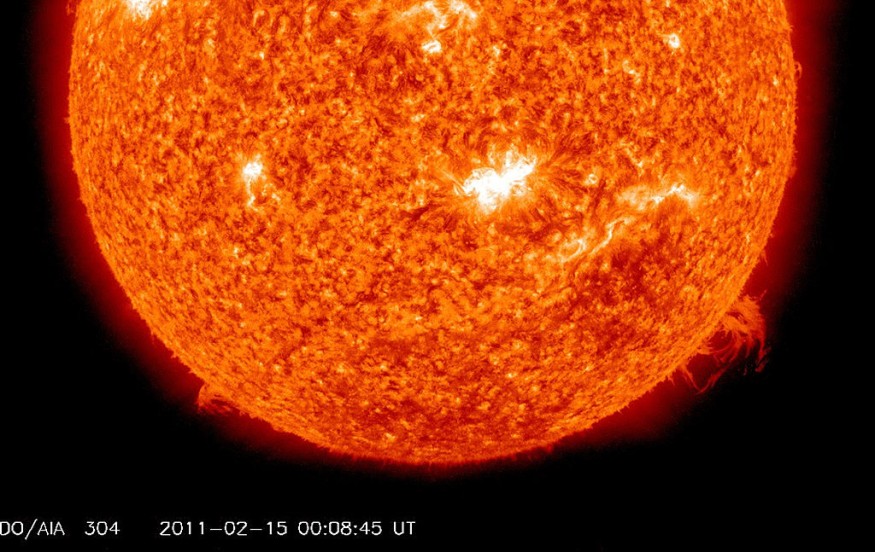A solar storm is predicted to touch the Earth today as NASA and the National Oceanic and Atmospheric Administration (NOAA) release their findings.
Whenever expulsions out from Sun hit the ionosphere, the boundary between outer space and our atmosphere, a solar storm, also known as a geomagnetic storm, occurs.
The "cloud of protons and electrons" clashes with the geomagnetic field, twisting it and creates a phenomena, such as the Northern Lights.
Although solar storms may be deadly, the National Oceanic and Atmospheric Administration (NOAA) produced a balanced list of "potential effects" from one, which isn't particularly significant.
Hectic weather in space

An elevation in the intense section of the radiation from the sun spectrum, they noted, might suggest a higher biological risk to astronauts, passengers, and crew on high-latitude, high-altitude trips, as per The Sun.
On every trip, passengers are subjected to small levels of space radiation from space.
During a solar storm, however, high-altitude flights distant from the equator are at greater danger because the magnetic field will drive radiation toward the poles.
When analyzing the overall effect, this information should be combined with the present Solar Radiation Storm circumstances, according to the brief report.
Solar prominence
When observed against the solar disk, a solar prominence (sometimes referred as a filament) is a big, luminous structure stretching forth from the Sun's surface.
The photosphere anchors prominences to the Sun's surface, and they extend outwards into the corona, the Sun's heated outermost atmosphere.
According to NASA, a prominence can grow in as little as a day, and sustained specular highlights can last for months in the corona, looping hundreds of thousands of kilometers into space.
Scientists are starting to understand how and why prominences occur.
The crimson looping material is plasma, a hot gas made composed of positively conductive hydrogen and helium.
The sun's core dynamo generates a tangled and twisted network of magnetic fields, which the prominence plasma flows through.
Solar storm
A solar storm is a term used to describe the atmospheric consequences that occur on Earth as a result of activities on the Sun's surface.
When a Sun generates massive bursts of energy in the form of solar flares and coronal mass ejections, solar storms occur. These events unleash a fast-moving torrent of electrical charges and magnetic fields toward the Earth.
The "northern lights," which may be seen in the regions near the Arctic Circle, are one of the results of a solar storm affecting Earth.
Disruption of satellites and other technological ways of communicating is one of the negative effects of solar storms.
Effects of solar storms
Coronal Mass Ejections carry extremely high-energy particles that can induce radiation sickness in living organisms.
The magnetic field is briefly interrupted whenever a coronal mass ejection clashes with both the Earth's atmosphere.
It has the potential to push satellites off track and force them to crash to the ground, putting numerous cities at danger.
Migrating species that utilize magneto reception to navigate, such as birds and honey bees, may also be harmed, according to some experts.
Geomagnetically generated currents in pipes can be caused by rapidly varying geomagnetic fields. For pipeline engineers, this can result in a slew of issues.
Pipeline flow meters can communicate inaccurate flow information, causing the pipeline's rate of corrosion to skyrocket.
Related article: Solar Storm Incoming Within 24 Hours: How Dangerous Will It Be?
© 2025 NatureWorldNews.com All rights reserved. Do not reproduce without permission.





